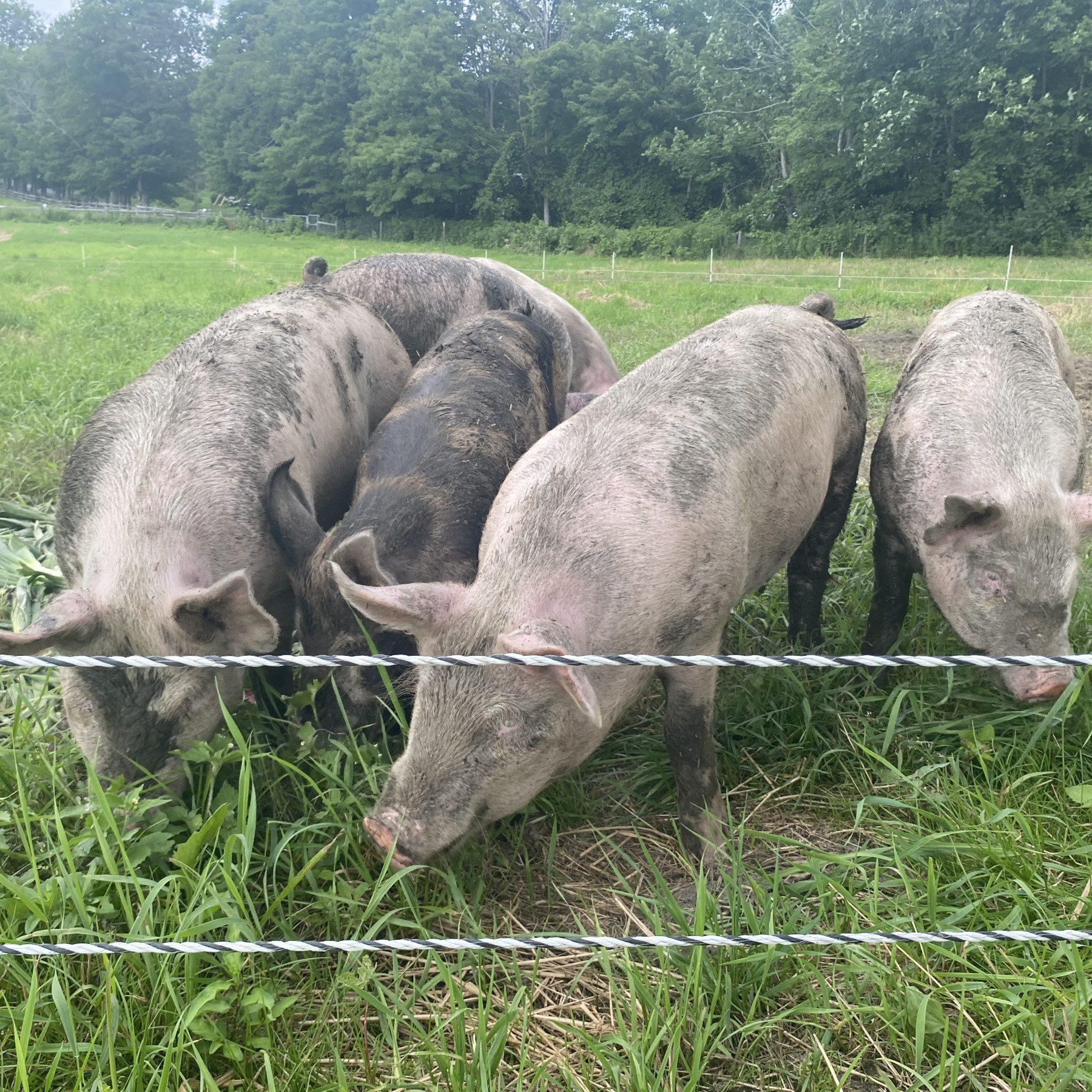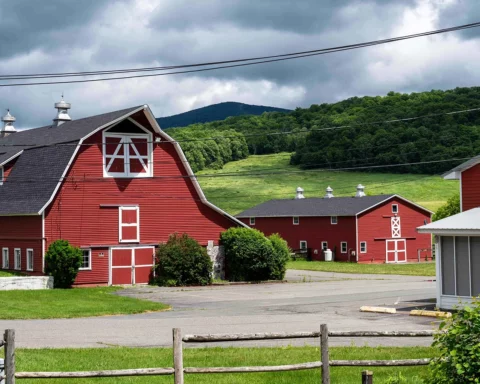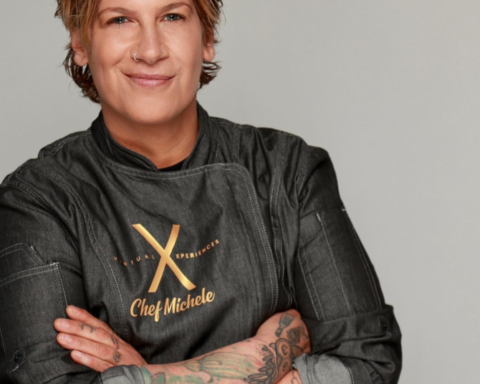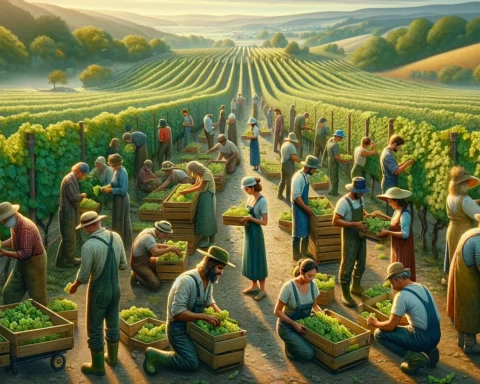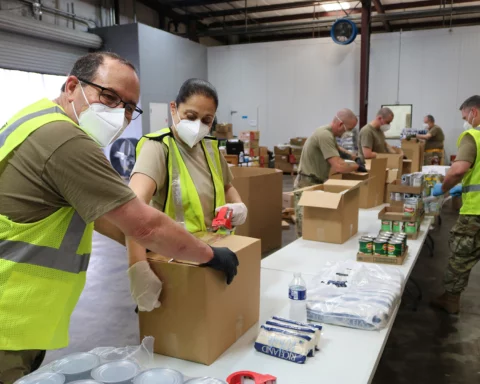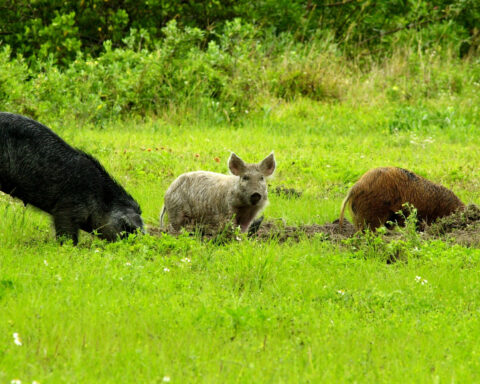by Isabel Costa and Mei Craig
Close your eyes and imagine the early morning sun starting to rise. The light shines through the bedroom window and a new day begins. In the early hours of the morning, you grab a cup of coffee and get ready to start your day. You are what is left to keep the pot stirring on your family farm. It has been in your family for generations and it’s your duty to continue its prosperity. The result of your hard work is creation, helping to keep communities alive. This goal comes at a hard price. No good deed goes unpunished and you cannot simply afford to do what you love, and other jobs have to take the place of the love you have for farming.
In Berkshire County, farms are not hard to come by, as many families have farmed in this area for generations.
Farmstands are not out of the ordinary, and you can count on your food being offered at the peak of freshness.
If one day these farms disappeared without a trace, it would be a shock to the community.
We need farmers, we need the nutrients they supply to nourish our families and communities.
What happens when farmers cannot provide for their own farms let alone themselves? Farmers in New England rely on either agritourism or a second job to foot the bill. They cannot survive without an off-farming job because it is just not financially viable. Hours off the farm become long and strenuous as that job is needed for major income, but you also have a farming business that needs constant care in order to survive.
No down time down on the farm
Life on the farm requires that daily duties are started as early as possible to ensure a successful day’s work. One principal farmer works off the farm, whether tending to the store where the farm sells their meat and produce or in another occupation completely.
Picture a busy morning that might be relatable, or it might be a different experience all together.
The farm animals need to be fed, the produce needs to be picked and more produce needs to be planted. The kids are off to work at their “preferred” job and one of the other farmers is getting ready for their off-farming work.
Tonya Halley runs Bittersweet Farm in Pittsfield, Mass. with her sister. Halley is a school nurse, and her sister works in school administration. When school is in session, Halley and her sister are off in the morning to complete the school day. When they are off for the Summer, they get up just as the sun rises to make sure their crops are in check and their land is prepared for inclement weather. Then they tend to their two goats, two horses, chickens and restock their farm stand.
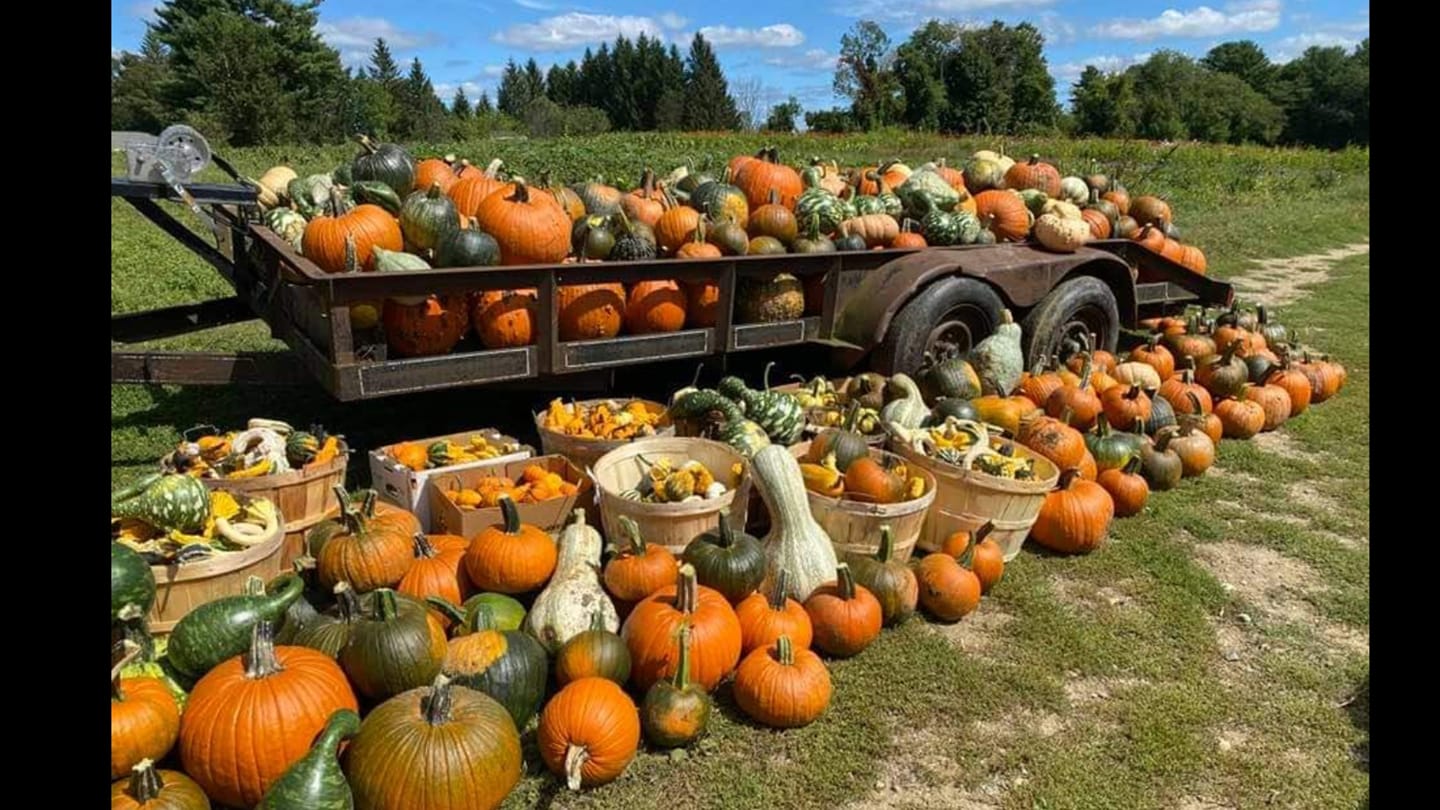
Danielle Dunton works at Fairview Hospital in Great Barrington, Mass. as a traveling and per-diem nurse. She also helps her husband run Shady Acres Farm in Canaan, NY. When she is not on a travel contract, she works two back-to-back twelve hour shifts at the hospital.
When Dunton is not working she is still up early to tend to the farm, feeding her cows, chickens, pigs and horses, pulling all the produce ready for selling and helping her husband out in the field.
This is before she gets her two-year-old son Joshua ready for the day and makes sure the 9 children of her family get to their daily activities safely.
Dunton’s son works at Subway down the street where he has been promoted to shift lead and gets ready to start his day there.
The Dunton’s have a new Australian Shepheard mix puppy who is going through training to learn the ropes of farm life.
In a 2019 report conducted by the United States Department of Agriculture (USDA), Economic Research Service, between 62-81 percent of small family farms had an operating profit margin in a high-risk “red zone.”
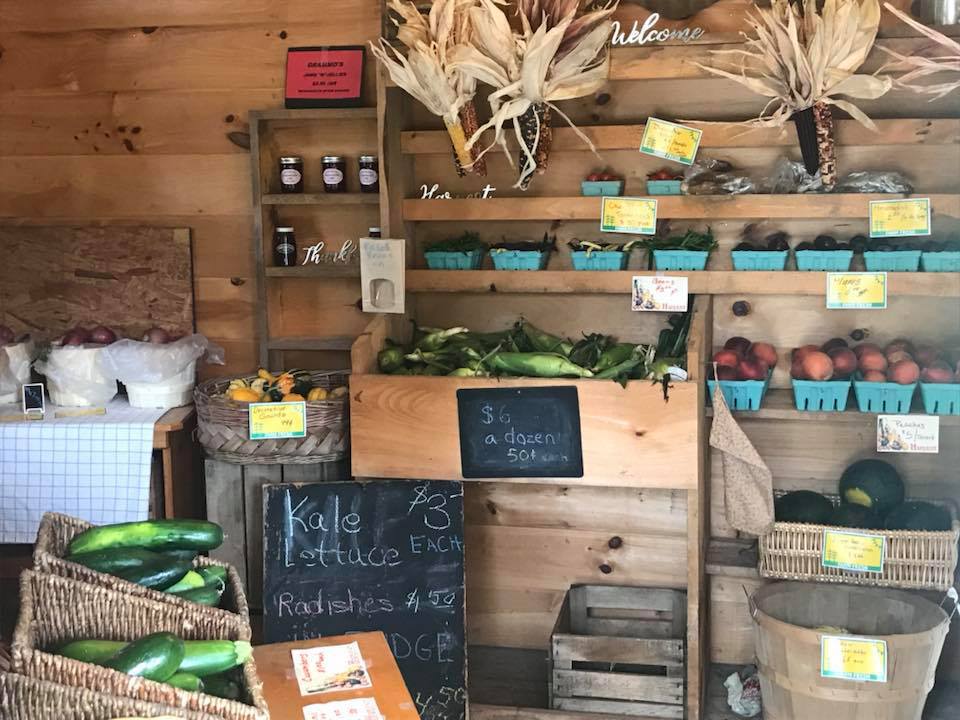
The report also indicated that many of these farms had a primary farmer that did not consider farming to be their primary occupation. This same report also reported that substantial income came from off-farm stores and all other off-farming occupations.
Jim Schultz runs Red Shirt Farm in Lanesborough, with a primary mission of raising pesticide free veggies and pasture raised animals such as chickens, turkeys and pigs.
Schultz is up early, anywhere between 4:30 – 5:00 a.m., to do planning and administration work before his crew arrives at 6:30. Jim and his crew work through the day aiming to end at 5:30 p.m., but sometimes going as late as eight o’clock. Schultz is lucky enough to have a crew of around seven employees who all work to start the day by feeding the animals and picking all the produce ready to be shipped or sold to local businesses, such as Guidos in Pittsfield, Mass. and local farmer’s markets.
Tracy Crosby runs Four Season Stables at Table Top Farm, a horse boarding and breeding farm in Lanesborough, Mass. Horses need to be fed, brushed and cleaned up in order to fulfill the proper health standards. The chickens also need to be fed as well as the two Great Pyrenees’s and the husky she owns. Tracy’s husband now works as a cook for Biggins Diggins; however he sets up his hours so he is more available to help on the farm. These responsibilities take a toll on the family because everyone has to chip in.
Choosing the farm life, despite knowing the sacrifices
Taft Farm, in Great Barrington, has been a mecca as a family run farm and farm store for 60 years. Stanley and Dan Tawczynski opened Taft Farm in 1961, building it from the bottom up. “The farm has grown so tremendously over the years, my brother Stan and I built this very building ourselves. I look back and realize, we picked the wood, hammered the nails, just all of it. Stan passed in 96’ and I’m the last of the original family’s children to run this place, said Tawczynki.”
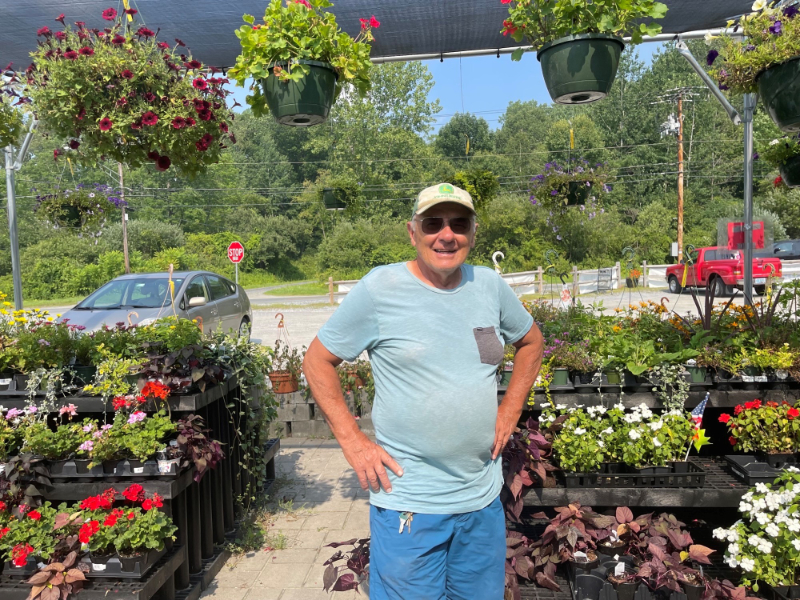
Dan Tawczynski is the last of the original generation to run Taft Farm; photo by Isabel Costa.
Tawczynki and his son Paul run the Taft Farm Store, known for their tried-and-true fresh organic produce and prepared food dishes.
Tawczynski, once an English teacher for high school juniors, writes in the introduction of his book, Green “I stayed with farming when so many opportunities to financially advance came and went. I could have gone in other directions, even after the choice had been made, and was occasionally tempted by attractive, sometimes substantial offers. I could be a wealthy man today, and I am, though my wallet often suffers stress, writes Tawczynski.”
If the Taft Farm Store did not exist the Tawczyski family could not financially survive on farming alone.
“Any nation that loses the ability to feed itself is in real trouble; the hell with the global economy — you have to worry about yourself. When I was a child growing up just down the road, there were 50 dairy farms in Great Barrington. A man with 40 cows could make a good living and put his kids through college. Today my friends are screaming they are not making anything. Today, agriculture is being governed by people who never saw food until it was on their plate,” commented Tawczyski.
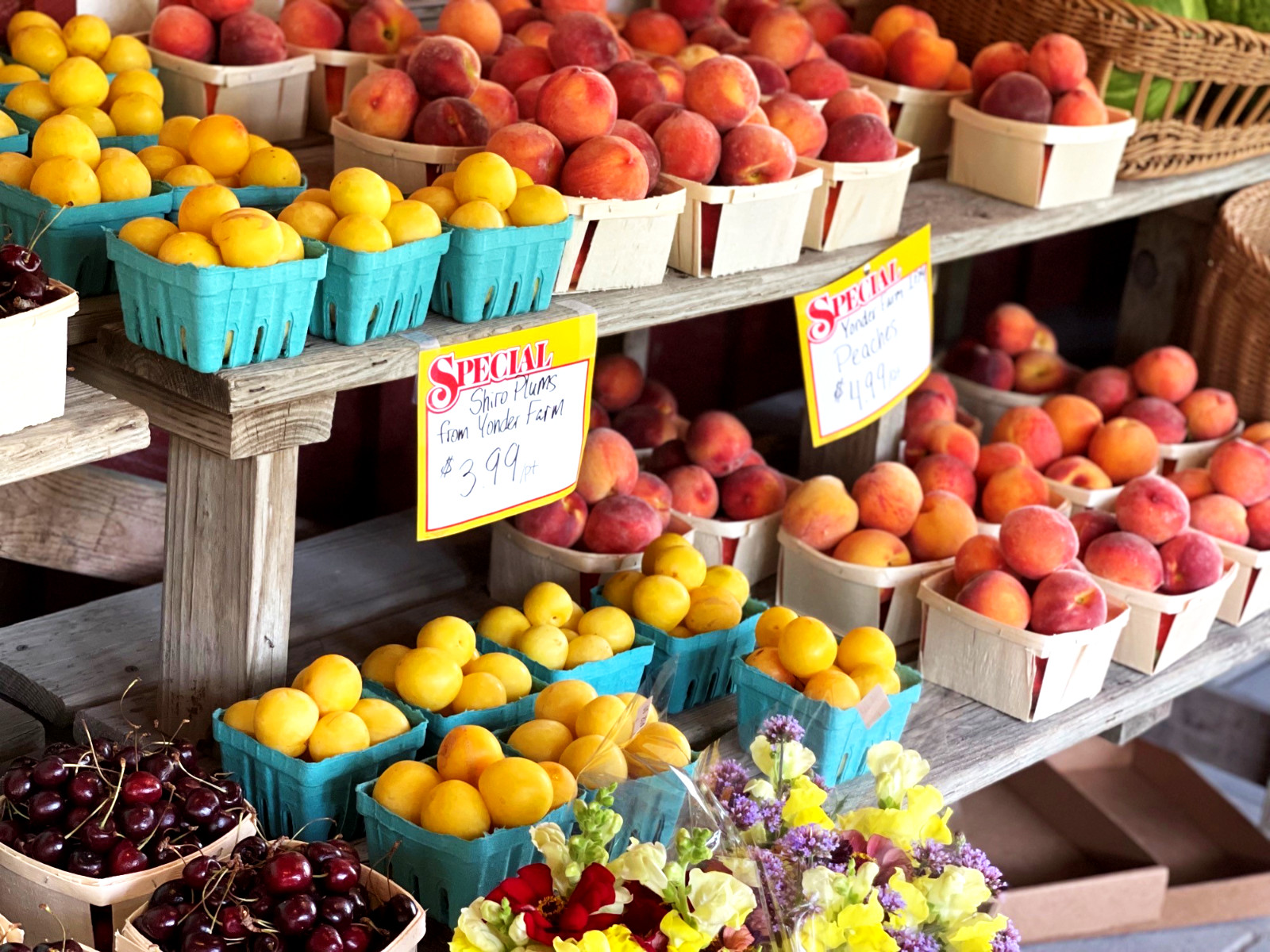
Taft farm offers top of the line produce such as corn, peaches, and tomatoes; photo by Isabel Costa
Although Paul runs the day-to-day management aspects of the farm and the business practices of the farm store, Taczynski comes to work every day to help manage crop production and do most of the harvesting work. When Paul is not at Taft Farm, he is an onscreen actor who has been seen in Law and Order and Uncut Gems. Paul is set to take over the farm when Tawczyski decides to retire. It is unknown if the next generation will follow in his footsteps.
“Paul wasn’t always too keen on taking over the farm. We had been working long hours and saving up what we could for his college and then he sat us down and said I don’t want to go to college. My wife Martha and I were shocked, and Paul ended up in the charter fishing business.
Paul has two children who are also on-screen actors, and do not seem to have an interest of continuing in the farming tradition.”
Tawczyski has another son, Keith, who does not work on Taft Farm due to another job that pays more. “My other son was a part of the farm but his wife decided they weren’t making enough money. He got a job long-haul trucking cross country making three times what I make,” said Tawczyski.”
A 2017 study conducted by the Census of Agriculture through a larger study by the American Farmland Trust found no concrete evidence of a plan for farm succession within many farm families. As of 2017, New England had over 17,300 new and beginning producers. Thirty percent of these producers have been farming for ten years or less. Across New England’s six states, the average age of new and beginning producers was roughly forty-six years old. Many beginning producers who are older start farming as a second-career or hobby. For the roughly 8,000 new and beginning producers under forty-five, unique challenges await them as less and less land is being passed down within families.
If it were not for the COVID-19 pandemic Tawczyski said, his own son who has been running the farm store wouldn’t have learned the value that farming has given not just him, but the community.
“When they shut everything down,” recalled Tawczyski, “I said what the hell are we going to do? This is going to be our death knell. Paul comes back and says ‘Dad you are crazy, this is an opportunity. This is an opportunity we have been waiting for — we can do what the chain stores can’t do. We know all the people we deal with on a first name basis.’ We were selling prime sirloin and T- Bone steaks for less than Price Chopper was selling hamburger.
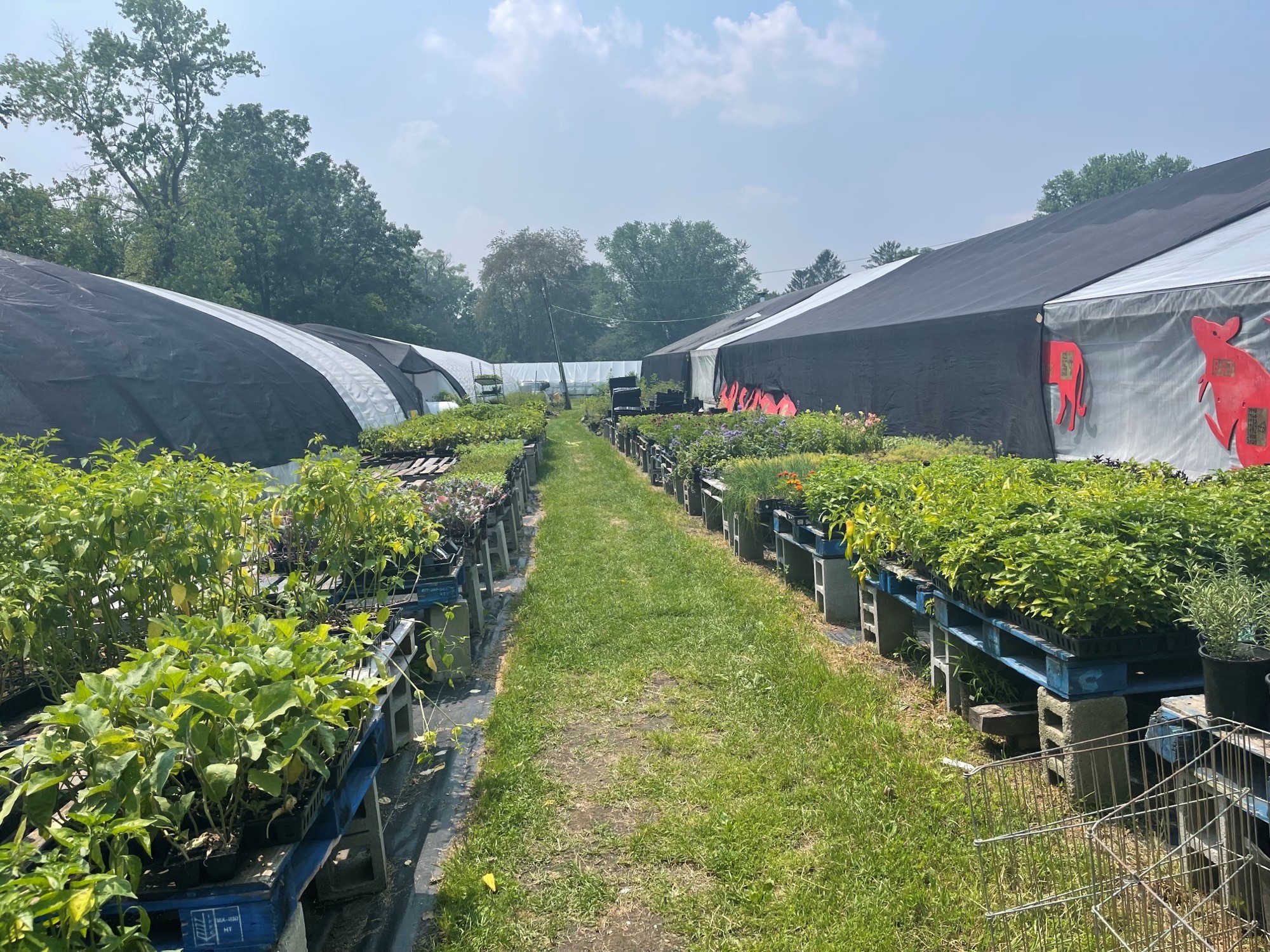
Taft farm Green house is open, seasonally, to customers to browse what plants are being harvested and available; photo by Isabel Costa.
“Facebook and social media helped to get the word out,” he continued, “and we were busier than ever. I was thinking of a way to tell my loyal employees that they were going to be laid off, but we ended up being busier than ever. People came to realize the utter value of locally grown product.”
As for the future of the farm and the everyday stressors it has, Tawczyski would not have it any other way. “Well, of course it’s stressful — everything is at some time or another — although there is absolutely no question farming keeps me going. My mother lived to be 94 and she raised hawks up to 6 months before she died. She had a way with animals and we kept asking her why she still did it. She said ‘I need a reason to get up in the morning.’ It’s what I was born to do and it’s the only thing I can see myself doing every day, said Tawczyski.”
Second income a mixed blessing
According to a 2013 study conducted by the USDA, ninety-one percent of farm households have at least one family member working at an off-farm job. Twenty-five percent of those fields are education and health care –related.
Bittersweet Farm in Pittsfield, Mass, is just off the road and you are greeted with a small farmstand offering farm fresh corn, lettuce, flowers and other produce. “My father and stepmom bought this place when I was sixteen years old and it was my dad’s dream to run a roadside farm stand. We had a little garden and it just grew and grew,” said Halley.” Halley’s father, David, has since developed Parkinson’s disease, reducing many of his tasks on the farm. “I’ve worked every summer on the farm since I was sixteen. I remember I was hot, tired, and sweaty, and back then it was just a job I did for my dad. It’s part of the family, the dream, so we keep it going,” commented Halley.
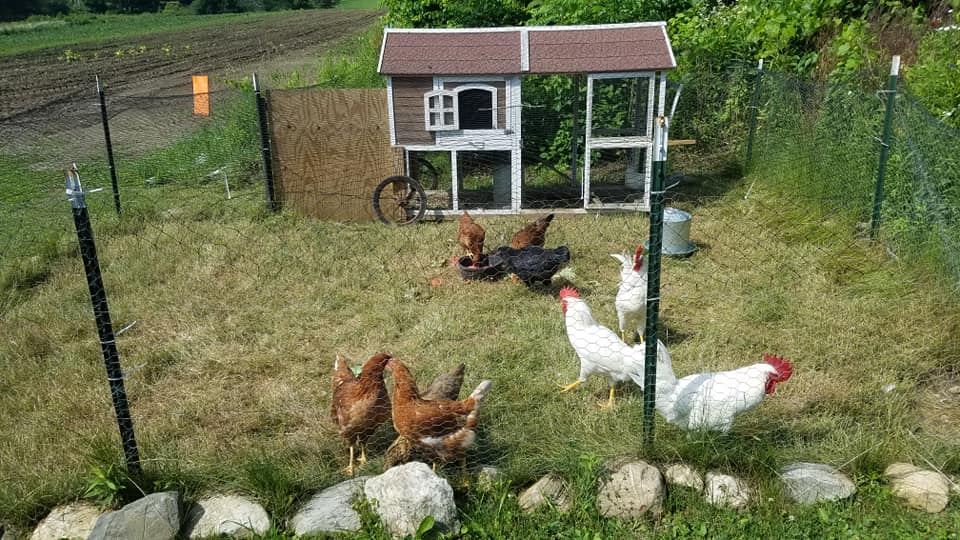
Since taking over the farm for her father, Halley has gained a new sense of awareness and pride for her part-time work on the farm. “I had an epiphany a couple years ago. While picking beans I became sweaty, extremely over heated and stinky, and I just looked around and saw the butterflies. I listened to the birds and told myself, I’m so lucky that I see this beauty all the time. The appreciation from all the people that come here, they love food that is grown right here. It makes it worth it,” says Halley.
Halley is among many female farmers in the medical field, working full time as a school nurse in Becket, Mass. “ You think that, being a nurse, people would be appreciative. I have found more appreciation here than I found in the any nursing job I’ve worked at,” declared Halley.
Although her nursing job pays for the essential bills, Halley looks forward to coming back home and working on the farm, stating “There isn’t much positive doing both, I would love to be a full-time farmer, but it’s not financially feasible. We just don’t make enough money.”
“The spring and fall seasons are incredibly difficult because both my sister and I are working full time, as well as struggling to keep up the farm,” she added.
The extensive rain this Summer not only washed out some of the crops at Bittersweet Farm, but many others as well.
“My usual day consists of taking care of animals, getting the farm stand going, and picking everything we need,” explained Halley. “This summer, the rain killed a lot of our crops. I’m relying more on buying from other farmers. Three times a week we go to a big farmer’s market that farmers attend to wholesale their crops. My sister and I get there right at 5:30 a.m. when they open to make sure we can get all we can,” explains Halley.
COVID-19 has had a positive impact on many farms, including Halley’s farm stand. “It was the one silver-lining because all of the restaurants were closed and everyone was cooking for their families. We did a record year last year — one of the best we have ever had on the farm. We were selling out of everything; we were just so busy. Second homeowners felt more comfortable picking up their food from our farm stand than buying food from crowded grocery stores,” she said.
“My sister and I were not operating on our regular school schedule,” Halley added, “so we were home to plant and could devote so much time to upkeep, it was really nice,”
Halley is optimistic about making the time for both farming and her full-time nursing job. Although the situation can be quite stressful she realizes she has her family and her farm to help her out of her difficult moments. “I just push through the stress and try to stop and look around and be like, this is gorgeous, this is nature, and this is beauty. It is not the end of the world, it’s just a farm and we will make it through,” said Halley.
Bittersweet Farm has a donation box at their stand which has turned more into a love box.
“We get love notes in the box outside, little notes saying they appreciate it, Halley explained. “I take pictures and put it on the fridge; it’s like we have an extended family of so many people. It truly makes me so happy to know that people appreciate our farm and what we do.”
Bittersweet Farm has no succession plan currently, something Halley thinks about constantly.
“I have a couple of nephews; farming is not something they look up to. They want to go into computers. They are into the internet and video games — the farm just doesn’t interest them. I don’t know what’s going to happen to the future of the farm, admitted Halley.”
According to a 2020 study by the USDA on “America’s Diverse Family Farms”, women are operators in about 51 percent of all farming operations. Women are the principal operators in 14 percent of operations, and another 37 percent of operations have female operators who were not identified by the respondent as the principal operator.
Farming still a family affair
Danielle Dunton of Shady Acres Farm in Canaan, N.Y., works as a full-time nurse and on the farm helping her husband. “I’m originally from Long Island, N.Y. When I lived there I was a nurse and still work as a nurse today. I was getting into farming prior to meeting him, and that’s part of how we met back when I lived on Long Island. I met him still dead broke trying to run a farm. My income coming to the table has really helped a lot in us building and expanding. We talk all the time about how I want to work full time on the farm too because he needs help, and our older kids don’t really have a desire to farm. My husband is disappointed because this is what he loves, and wants the same for his family,” says Dunton.
Dunton’s work at Fairview Hospital as a per diem nurse, as well as a traveling nurse is necessary and provides her family with money that farming cannot. “I work per-diem at Berkshire Health Systems. I was at Pittsfield, now I’m at Fairview, so I do have the flexibility of picking up those traveling contracts. In the Winter I’m mainly traveling and I usually keep it two hours from home. Right now the hospitals are so busy, not with COVID but because everyone has moved here and the population has tripled in size. My husband started farming when he was as young as two years old. He went to school for Agricultural Sciences and has been farming with cows since he was about ten years old,” says Dunton.
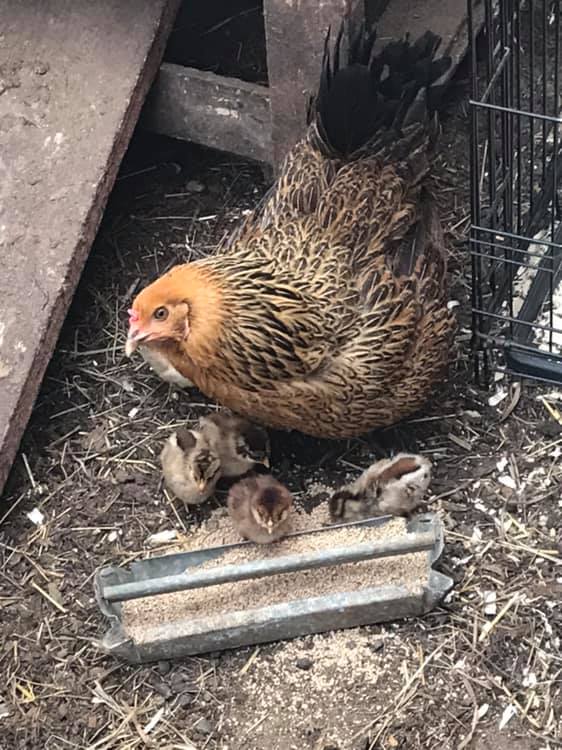
At Shady Acers Farm, the minimal daily duties include; stocking the farm stand with all the available produce, feeding the horses, pigs, and cows, and collecting eggs. Due to the rain, it has been especially difficult to make hay, a top seller and a source of protein for animals on the farm.
Most of the time Danielle helps her husband get back and forth between fields with tractors.
Farming is still overwhelmingly a family business. According to the USDA, 98 percent of U.S. farms are family farms and they account for 86 percent of farm production. Small family farms make up 90 percent of the farm count and operate almost half of the farmland.
“One of the reasons I started farming was I had a two-year-old son who had passed away.
He just went to sleep and never woke up the next morning. The nurses at the hospital worked hard to donate about nine months of paid time off for me. I had all this time off and got into farming and it was extremely therapeutic. It’s really impressive, I plant this tiny seed in the ground and I can feed tons of people, acknowledges Dunton.”
Dunton expresses a common emotion among the farmers; a heightened level of appreciation for the land and what can be created from it. “I learn a lot of lessons out in the garden,” she explained, “it’s strange. Out here you appreciate nature and everything God has created. I get to be outdoors when I farm which I absolutely love. I mean, nursing is fulfilling but it truly takes its toll on you. By the end of the day you are completely spent; whereas farming I can be out here for 12 hours and you’re not constantly emptying that cup,” explains Dunton.
The Duntons are concerned about who will eventually take over their family farm. Between Danielle and her husband they have nine children. “Two of the teens work at Subway and I think they see, watching my husband and I, that it is so much work for such little money. You are exhausted all the time and there are good days and really bad days. It’s variable — you might have one great crop but another year you’re washed out. Yes, there is crop insurance, but still, you can work at Subway for $18 per hour. He is 19 and would rather work at Subway than have his dad pay him $10 an hour to break his back all day making hay or unloading. He figures he can go make sandwiches and I don’t blame him. By nature, you are always looking for the most profitable thing, states Dunton.” When Dunton was asked if she would ever quit her farming occupation, she agreed with a lot of farmers that she has thought about quitting, but that it’s a labor of love.
“It is a dream that we need to make work,“ she explained, “My husband could never work on this farm on his own. Making hay is so time consuming that he is up at sunrise and comes home at 10 at night. How would he manage any of this?” posed Dunton.
COVID- 19 was a terrible blessing that came to the Dunton’s. “We didn’t lose money at all during COVID; the farm stand has actually gotten busier. People were so grateful and they kept telling us over and over. They didn’t want to go into Walmart with so many people around, she said. The fact that they could come locally and get their meat and produce, they really started to have a new found appreciation for what we do.”
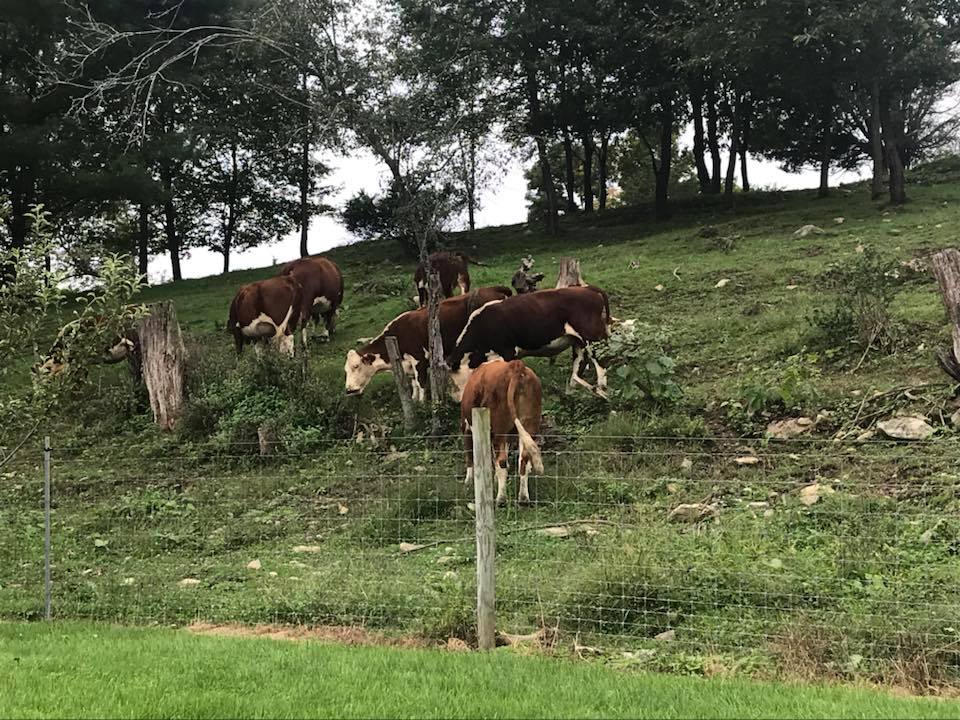
As far as family tensions, Dunton says the children suffer the most. “I think the kids suffer mentally more than anything, all of our family time is in the garden working. I would love to go on vacation in the Summer, but we can’t do that, we have no one to come feed the animals. I have a camper and I can take the kids to hang by the lake or the pool, but it’s not the same, confessed Dunton.”
A type of sanctuary in trying times
Kerstin Voss, owner of Hokaheh Farm in Housatonic, Mass., also works at Fairview Hospital, and the farm caretaker, John Condon, says this farm wouldn’t last if it weren’t for Voss’s fixed income.
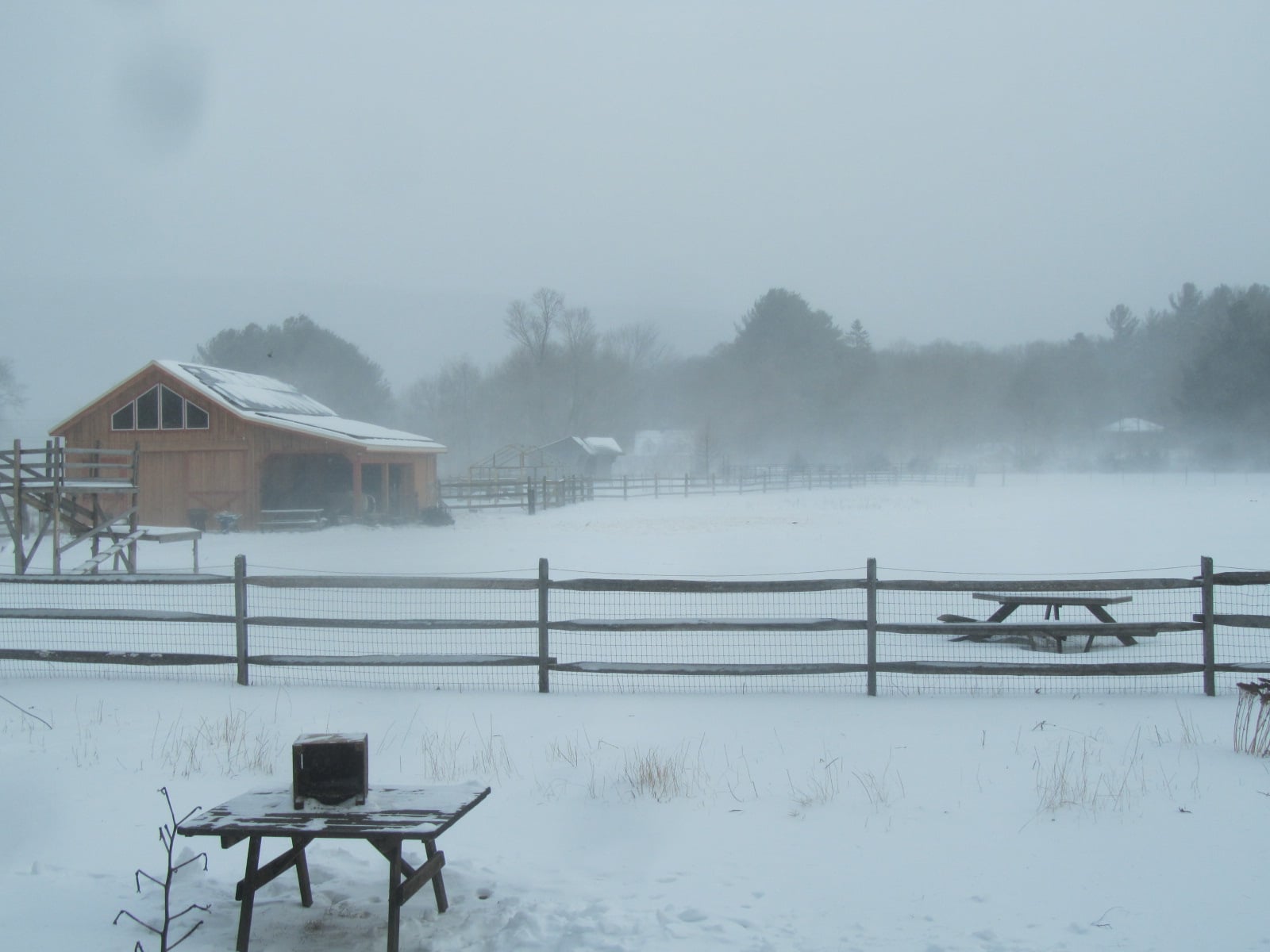
Hokaheh Farm breeds and houses adult and baby goats while also hosting a small farm stand.
“My daily routine, above all else, is to make sure everybody is healthy and fed, has clean water and all the babies are accounted for,” said Voss. I call animals people because to me they are — they are my friends and I treat them like people. They are just like people in that their behavior reflects the way they are treated.”
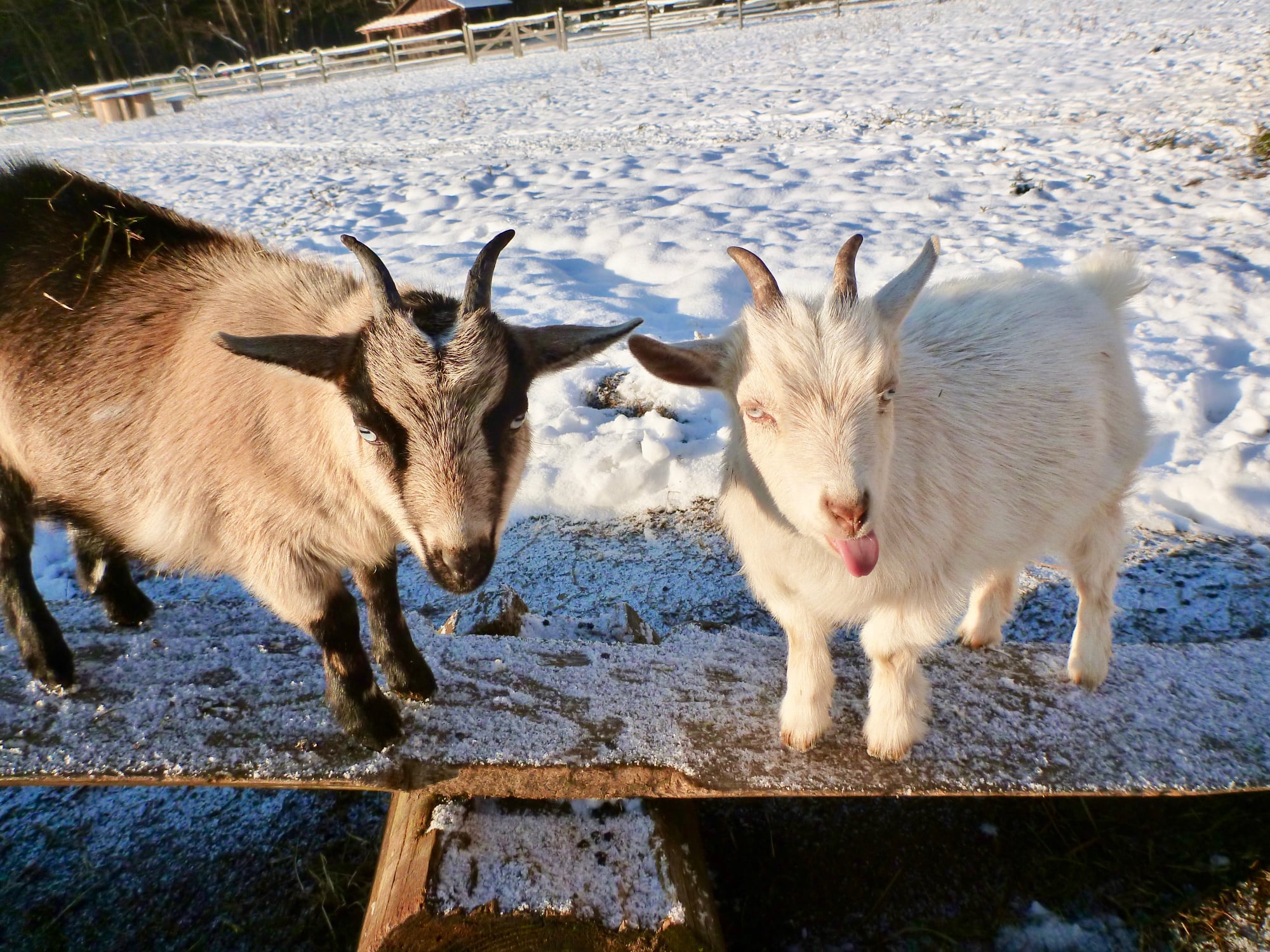
Prior to his job at Hokaheh, Condon was a freelance contractor and painter traveling to customer’s houses for work. When the pandemic hit, Condon’s work, was cut and he started working on the farm full time. “COVID has affected my side work, and by rights they didn’t want extra people in their home,” acknowledged Condon. “Many of my clients had so much time on their hands they did a lot of that work themselves. In addition I receive a small salary for taking care of the animals and any projects on the farm that need to be done.”
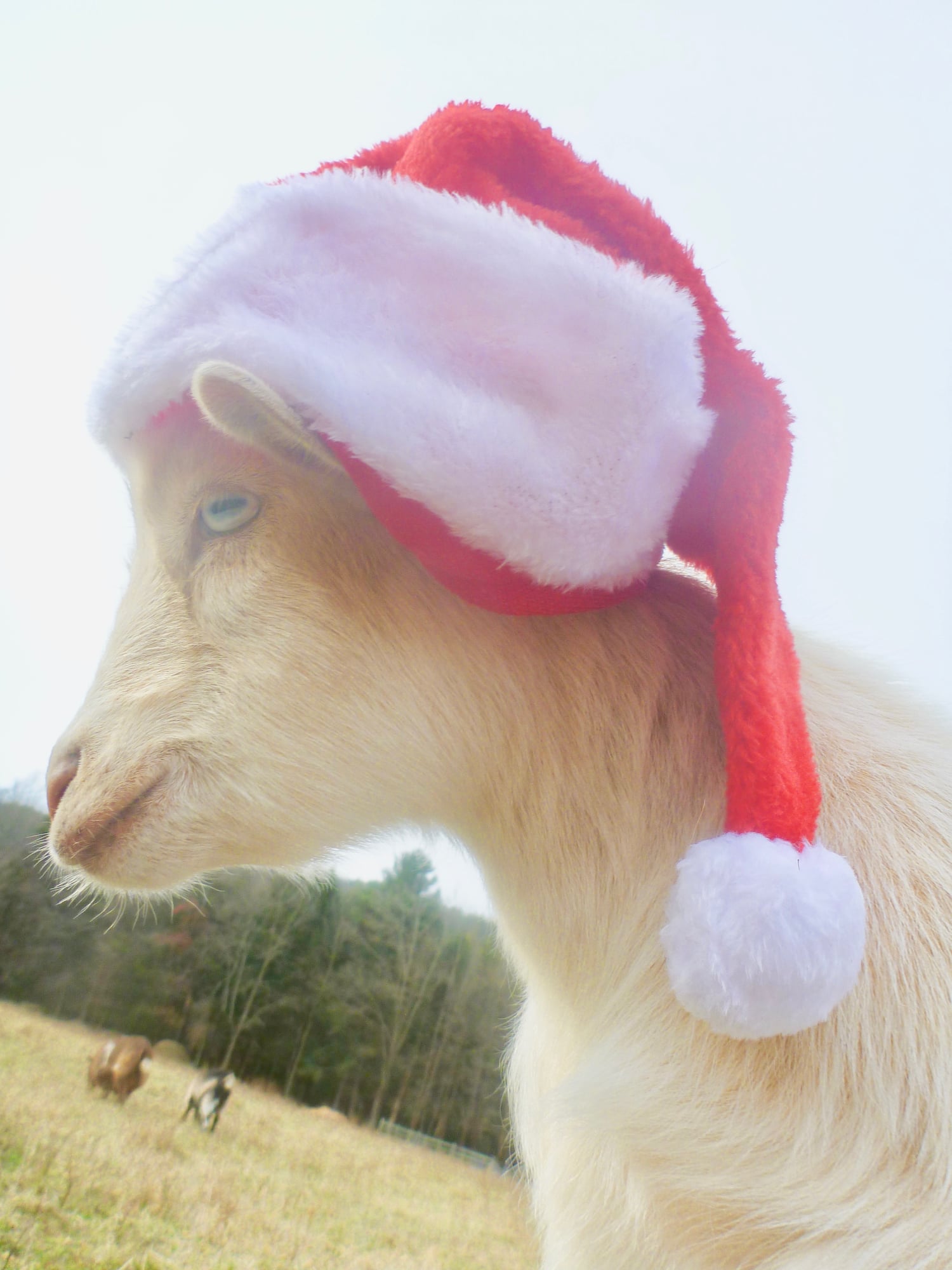
Condon has a special relationship with the farm, completely loving his job and having a different relationship with each goat he cares for. “Kerstin and I don’t have any children, so the goats are our children and babies,” he said. We do this out of love more than we do it for profit. Never in a million years would I stop my work here. This is my main priority, love, and focus, and my mind and heart is always here. If someone would sell me a $10,000 lottery ticket I would still always turn to the farm, reflects Condon.”
Hokaheh is truly a farm sanctuary, an open space for a small amount of produce to grow and the goats and chickens to graze. “We can’t run this year-round without extra income; we would need a much bigger operation and I’m mainly the one that does the most. We thought about making this a sanctuary but you have to take animals in 24/7 without refusal and we would need more income to do that. We thought about starting to make our own honey to generate more money, but the price of the equipment outweighs the labor, pointed out Condon.”
COVID-19 has had an effect on Hokaheh, with less traffic at their events and price inflation of items such as lumber and seeds. “I saw the inflation on certain items affect the farm,” Condon said, “Lumber was insane. The repairs I could have done for $20 were costing me over $100 to complete.
“Customers were growing their own flowers with the time spent at home, which took away from our sales,” he recalled. “One of our biggest money makers was our goat sales, people were lonely and needed companionship so sales went up. Some goats prospered, and some went to homes who were not fully educated on their care and I try to go and help these families, but it ends up costing us more.”
Hokahehs most popular agritourism event is “Meet The Goats,” what Condon says is a thank you to the community that helps them prosper — with hundreds of attendees from police officers, to large families, to couples looking for some happy times with the goats.
Education, experience can set new farmers off on good footing
Red Shirt Farm, run by Jim Schultz, is set on 10 acres of land in Lanesborough, Mass. The mission at Red Shirt Farm is to treat produce without the use of pesticides or harsh chemicals, and Schultz seems to be making a success story out of his love for organic, chemical free farming.
Schultz, at one time a pre-med student at Williams College, has always felt a pull to the farm. “What I really wanted to do was farm and homestead,” he said “so I tried that out when I attended Williams. I don’t know, I’ve always had a real interest in health, the environment and ecology, and the nexus of the two. It kind of fit with pre-med but with the writing on the wall that it would take years to be ready to do conventional medicine which is like conventional agriculture in the sense that it’s not really about healthcare, it’s about sick care. It’s more about treating diseases rather than keeping people healthy.”
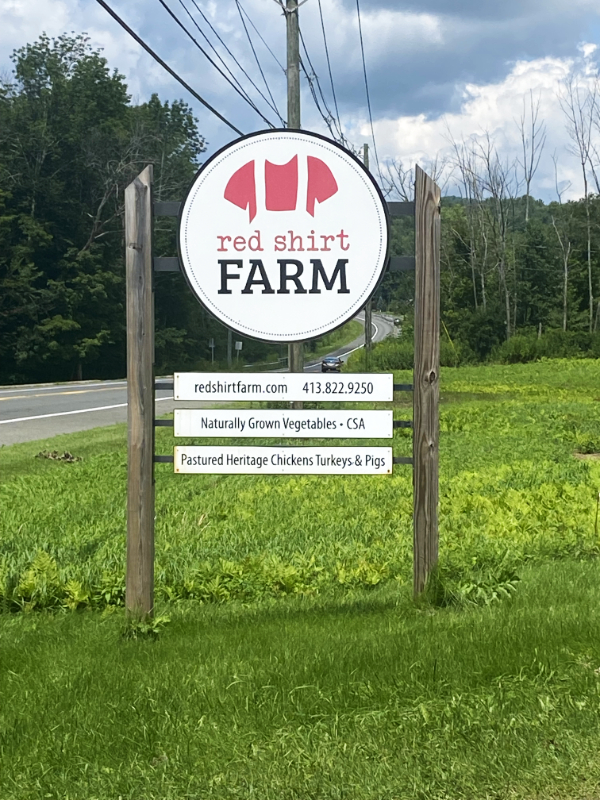
Schultz grew up in the suburbs of Boston to a non-farming family, and as he entered adulthood his love and appreciation for farming continued to grow.
“I do think in some ways it helps you [not growing up on a farm] because you don’t have any pre-conceived notions about how things should be,” Condon mused. “Kids who grew up on farms now feel like they have to do it the same way their grandfathers did and fathers did. A lot of times I think it’s almost better to come in with no pre-conceived notions, but it does require tons of learning and experience.”
Schultz’s wife, Annie, doesn’t have a desire to work on the farm, differing from other farms in the area which need all the help from their family members.
“It’s just what our passions are — my wife just isn’t as interested in agriculture as I am. She grew up on a Caretaker Farm in Williamstown, Mass. Annie’s in between, she likes the farm but it’s not a passion of hers to actually do it. She is a nurse because she loves it,” says Schultz.
Schultz believes that a robust education in farming will lead the younger generation to want to start their own farms. He says he feels that a good education can be what flips the coin. “I was an apprentice for three years,” he said, “and did a lot of other things involved with agriculture before I felt I was ready to start my own farm. This is why we have the apprenticeship program here, because there are so many people who want to get into farming but neither have access to land nor the experience. I’m really convinced that the only way we can move forward is with regenerative agriculture and there’s really no place to learn that except on regenerative farms, which is part of the reason why we take on apprentices. Plus, having been a teacher for 26 years, I still have that urge to be an educator.
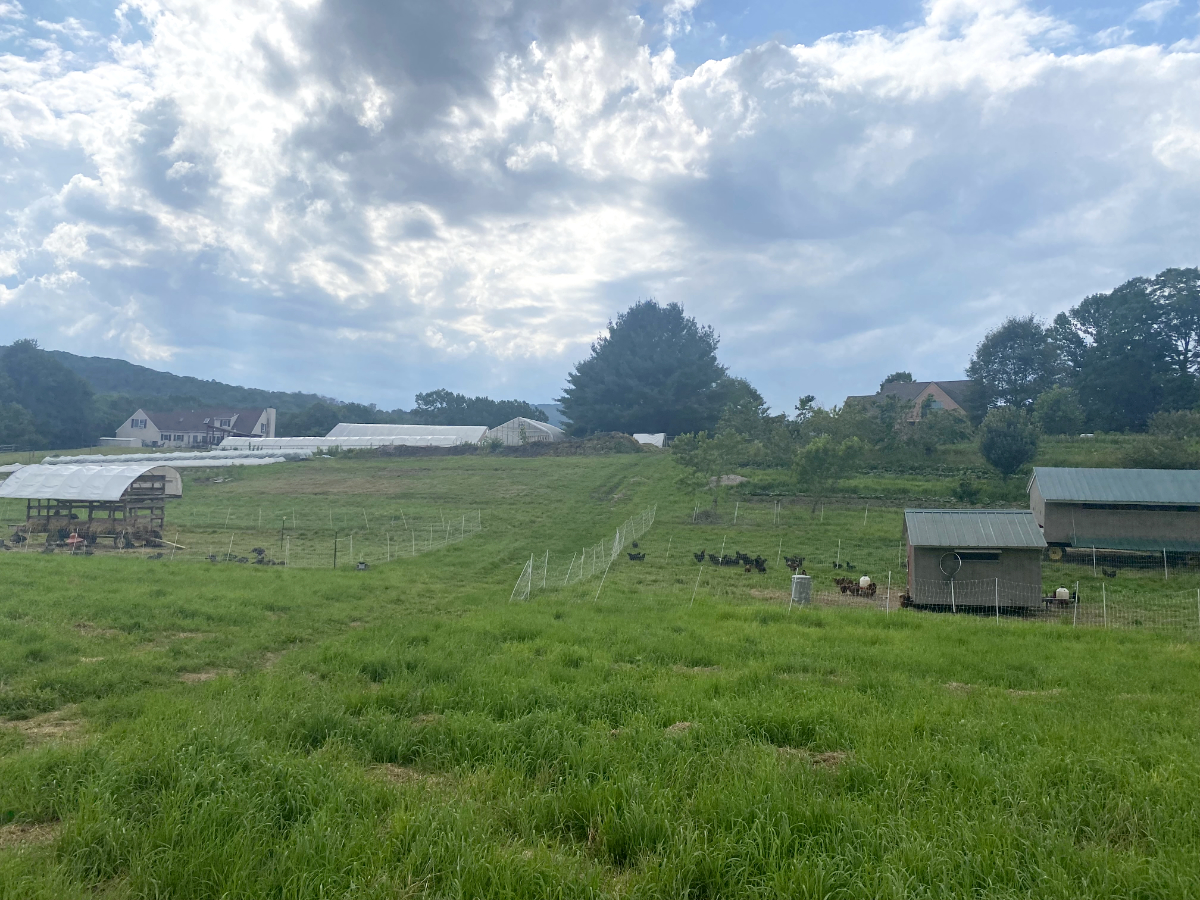
Red Shirt Farm does not currently have a farm store to sell their goods for additional revenue. “It’s not always such a huge moneymaker which is why we are taking our time putting it in place,” Schultz said, “because just throwing up a farm stand, you know, you’ve got to keep it stocked and you have to keep everything looking nice.
“I work with 130 families with Community Supported Agriculture (CSA),” he said of the farms revenue focus. “The typical share is between $500 to $700, and with the farmers market and a few thousand dollars there in 20 weeks, we do okay. Between those outlets it really takes care of what we need right now. All sorts of considerations such as water. electricity, and a commercial kitchen — all of this stuff kind of adds up. A lot of times it’s better to keep stuff simple.”
Adapting traditional farming to serve new needs
Tracy Crosby always has her horse farm on her mind, even when working two 24 hour shifts as an EMS first responder off her farm. A horse lover from the start, Crosby got her degree from the University of Massachusetts Amherst in Horse Management. “I have had horses since I was maybe 14. I’ve always had horses and boarded them. When we moved to Pittsfield, Mass. we ran a different barn until the owner decided to close it, said Crosby.”
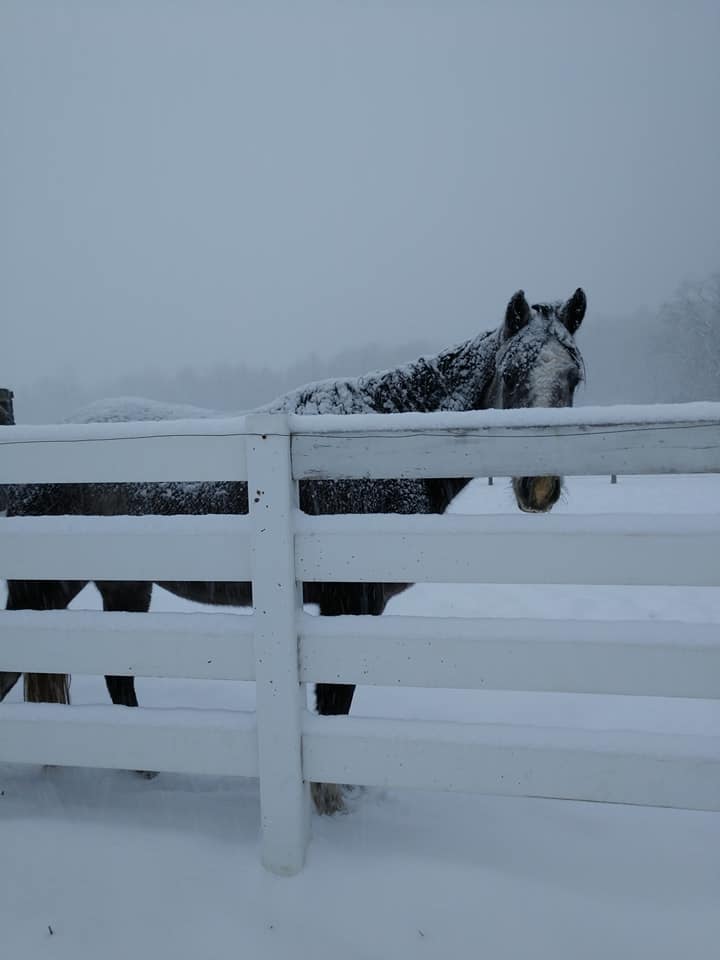
Even with the challenges of two jobs, Crosby loves every minute of it. “I’ve always worked at the fire department or EMS,” she said. “It has always been a constant passion and it just worked out to do other jobs and go do that full time. Last fall I worked two full time jobs so I did 88 hours a week off the farm. I got injured a year ago so I’m now full duty at one job but with restricted hours.
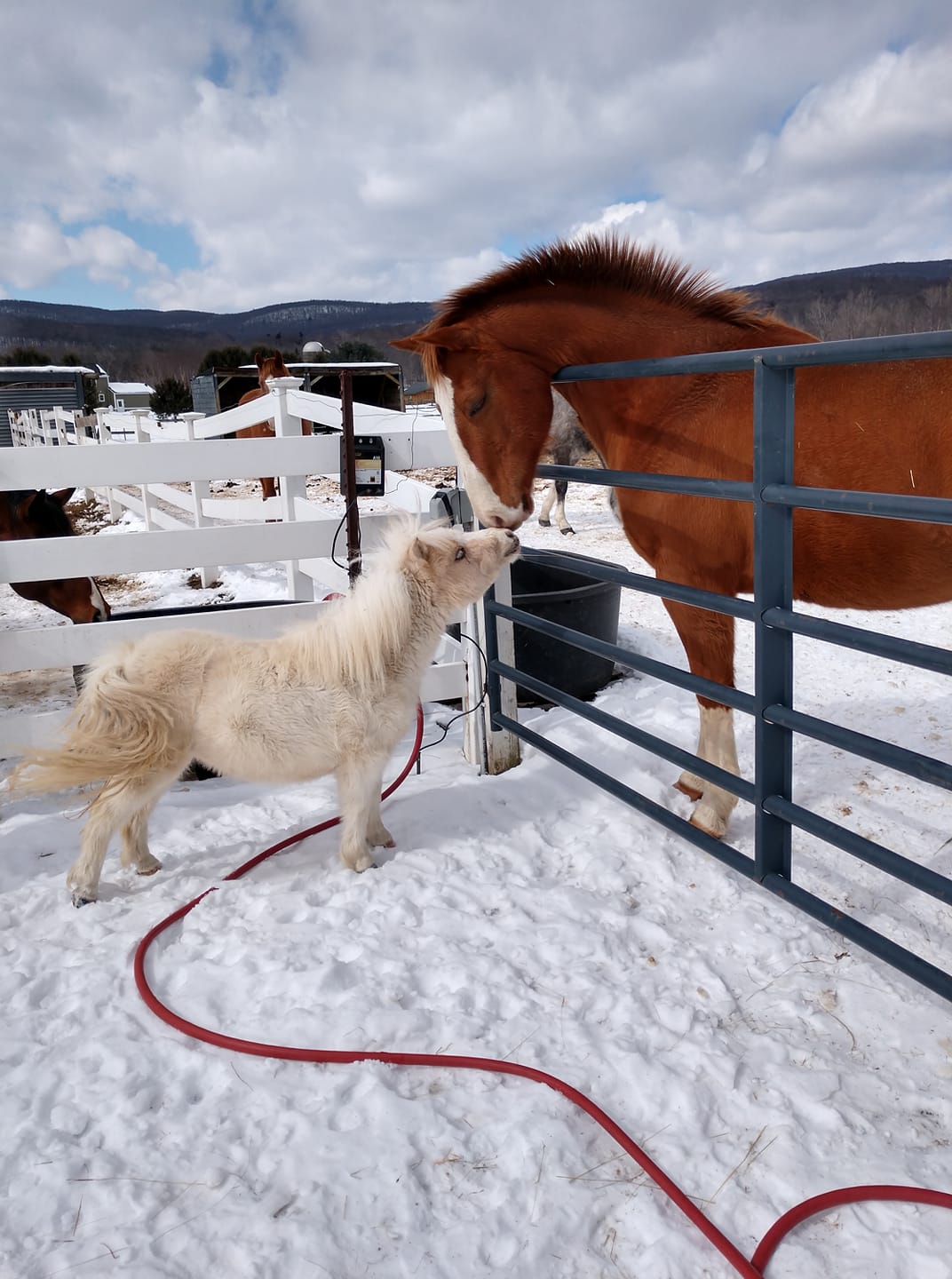
“This in turn lets me do more work on the farm since I’m home more,” she continued. “Most of our revenue comes from boarding and the boarding income pays for the horses, the feed, and the bedding, and the insurance. Ideally, it would also pay some of the mortgage on the farm. The full time jobs pay for the other expenses like electricity and other needs. Our grain bill every week is $200 alone.”
Her use of agritourism is in the form of clinicals through the use of equine therapy. “We advertise them on Facebook for people to attend or just to watch. These clinicals center around issues such as PTSD and trauma. I am trying to set up a collaboration with the Brien Center to make this more accessible, explained Crosby.”
The clinicals don’t bring Crosby as much added income as she would like, but it does help her get more breeders to come and experience her farm. At both of her jobs, Crosby gets to help people which is truly her goal.” I love that I get to help people both here and at my full-time job, helping people when they are in crisis, literally. In EMS, we can have a set schedule and get all our hours in a short amount of time. It’s not always the same, something is always different, which I like. I’m more of a know what needs to get done and get it done kind of person, explains Crosby.”
Whenever Crosby gets stressed, she bonds with her horses. Caring for and riding her horses is her therapy. Crosby hopes her son takes over the farm when he is ready and it will remain in the family. “We hope he will take over but right now he is twelve and is in to being out in the woods on his four-wheeler,” laughed Crosby.
Crosby fully believes in getting breaks when she can from the farm, and trying to spend time with family, even if only for a few hours. “When we have some same days off, we tackle big projects or, if we can, get away with the family. It’s important not to be at the farm all the time, though we need to be here to really make sure everything flows. If we can, it’s nice to pack up and go to the lake for the afternoon just to separate between work time and family time, a chance to lay our heads down a bit,” says Crosby.
Multiple solutions considered to maintain farm viability
A 2019 article in Mercury News reported that, according to the most recent census data, between 2012 and 2017, more than 514 of Mass farms went under. More than 76 percent of those farms were family owned and operated. A 2000 study conducted by the University of Pennsylvania found that 90 percent of the average 1999 farm household income of $64,347 came from off-farm sources. These statistics only confirm the financial challenges that threaten the viability small family farms.
The question is how to meet and overcome these challenges. Can small family farms generate sufficient revenue and profit to viably support the farming family? What strategies are required to make it happen? What role can government play? What steps should the farmers take? What actions can consumers undertake?
Some suggest government involvement in the form of a farm safety net that would follow the lead of other federal assistance programs by assuring farm families some minimum income, presumably sufficient to sustain them and their engagement in farming at some level. The design of any safety net for contemporary farming should consider the diverse circumstances of farm households. A one-size-fits-all approach, which typifies most current programs, will be unlikely to address the most significant income problems. Government policy can be a short-term way to fight this battle, but it really comes down to preserving income for farmers.
Many small family farms are looking to agritourism as a beneficial practice. It is a great way to integrate families into learning about farming practices, but the question is how best to make it a significant revenue stream. Creating awareness about farming income can also be a vehicle for change.
Consumers who enjoy the availability of fresh organic produce can make it a practice to support small family farm stores, roadside stands, local farmer’s markets and restaurants that offer farm-to-table fare.
Farm stands are a monument of hard work, dedication, and perseverance. Perhaps the most direct way that the public can contribute to the preservation of a traditional, and possibly critical sector of the local economy, is simply to take the time to stop at local farmstands instead of driving by and initiate a productive conversation. That, and picking up some produce, eggs, or meat that’s on the shopping list anyway, is the best way of letting these small farmers know that their hard work is sincerely appreciated as is the extremely positive impact they are making in our cherished communities.
